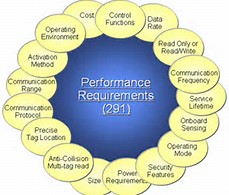Designed to prevent the risk event from materializing by acting as a barrier to causes that may give rise to the
risk event
†
Mitigating Controls

†
If a risk has materialized, mitigating controls act as a barrier to the consequences of that risk
†
Critical Controls What is a Critical Control?
What is a Critical Control?
A Critical Control is a primary barrier to a cause or a consequence. It is independent of other controls and on itís own is a barrier to the cause or consequence.
Hierarchy of Controls
There are different levels of controls which have varying effectiveness. The less human involvement, the more effective a control is. Generally there are five levels of controls, in descending order of effectiveness.
†
- Elimination
- Substitution
- Engineering
- Administrative
- Personal Protective Equipment
†
†
Performance Requirements†
Control performance requirements for Critical Controls are essential for safe design and for following up safety through barrier management. Performance requirements are usually documented in performance standards.
A Performance Standard generally has three components:
†
- Design Standard
- The ability to meet performance targets is for those targets to be specified clearly and unambiguously. This can include benchmarks, standards (especially any industry standards), specifications, testing and adherence criteria;
- Operating Standard
- Sets out how the standards will be met to ensure the control is operating as intended. This should include frequency of activities and who is responsible for carrying out the activities. The frequency of activities should also be specified; and
†
- Verification Approach
- Timely adherence to the operating standard needs to be verified by a person other than the one performing the operating standard. The frequency of verifications should also be specified.
†
†
 A control (or barrier) can be any measure (physical and/or non-physical) to prevent, control or mitigate undesired events or accidents. A control should be fully functional, independent and auditable.
A control (or barrier) can be any measure (physical and/or non-physical) to prevent, control or mitigate undesired events or accidents. A control should be fully functional, independent and auditable.





